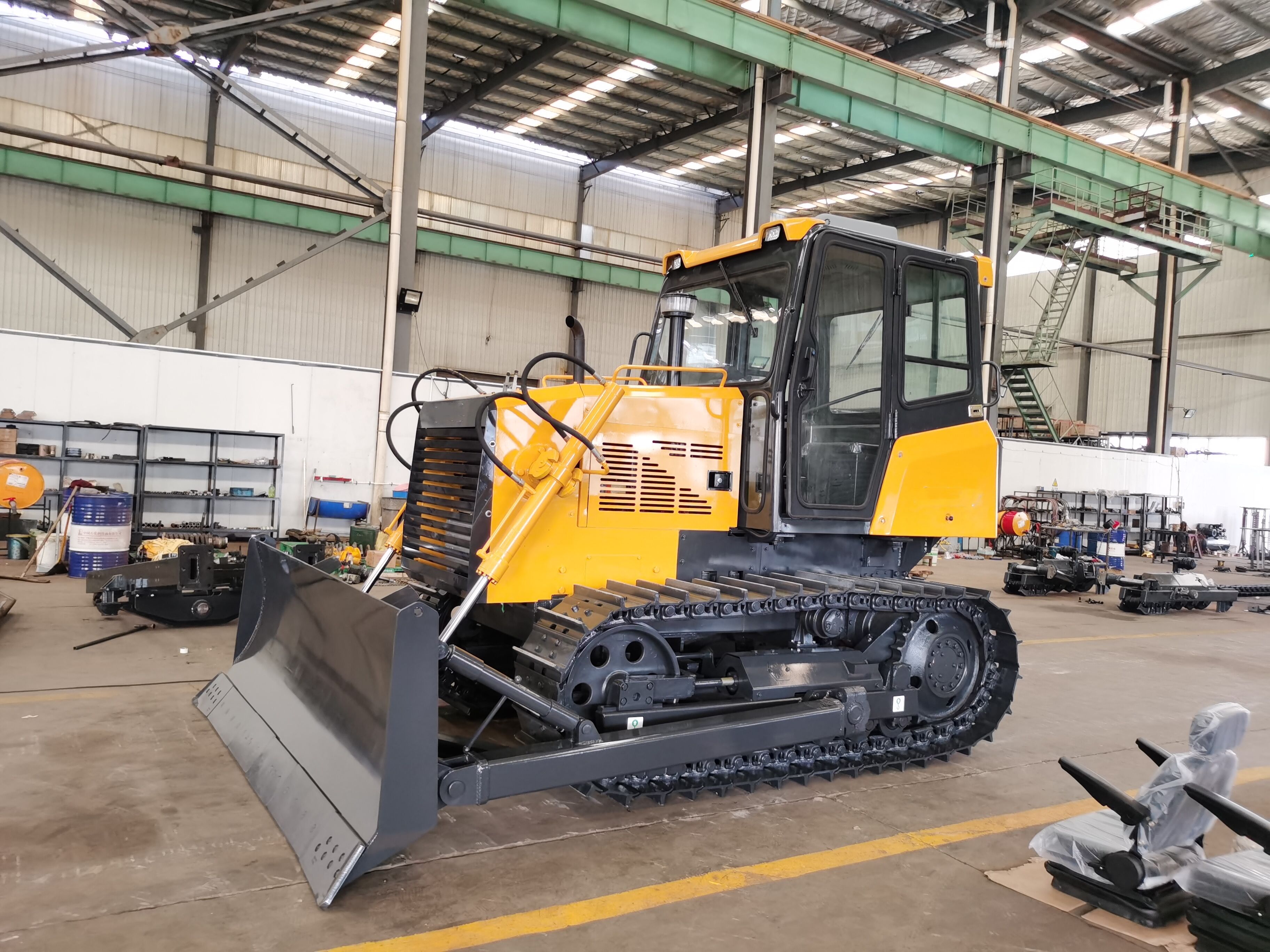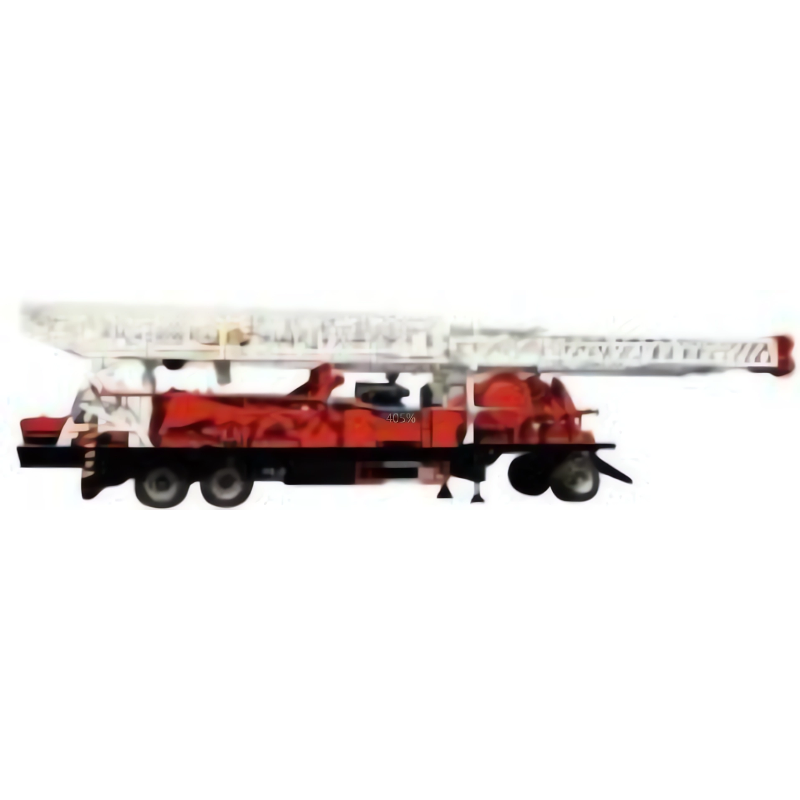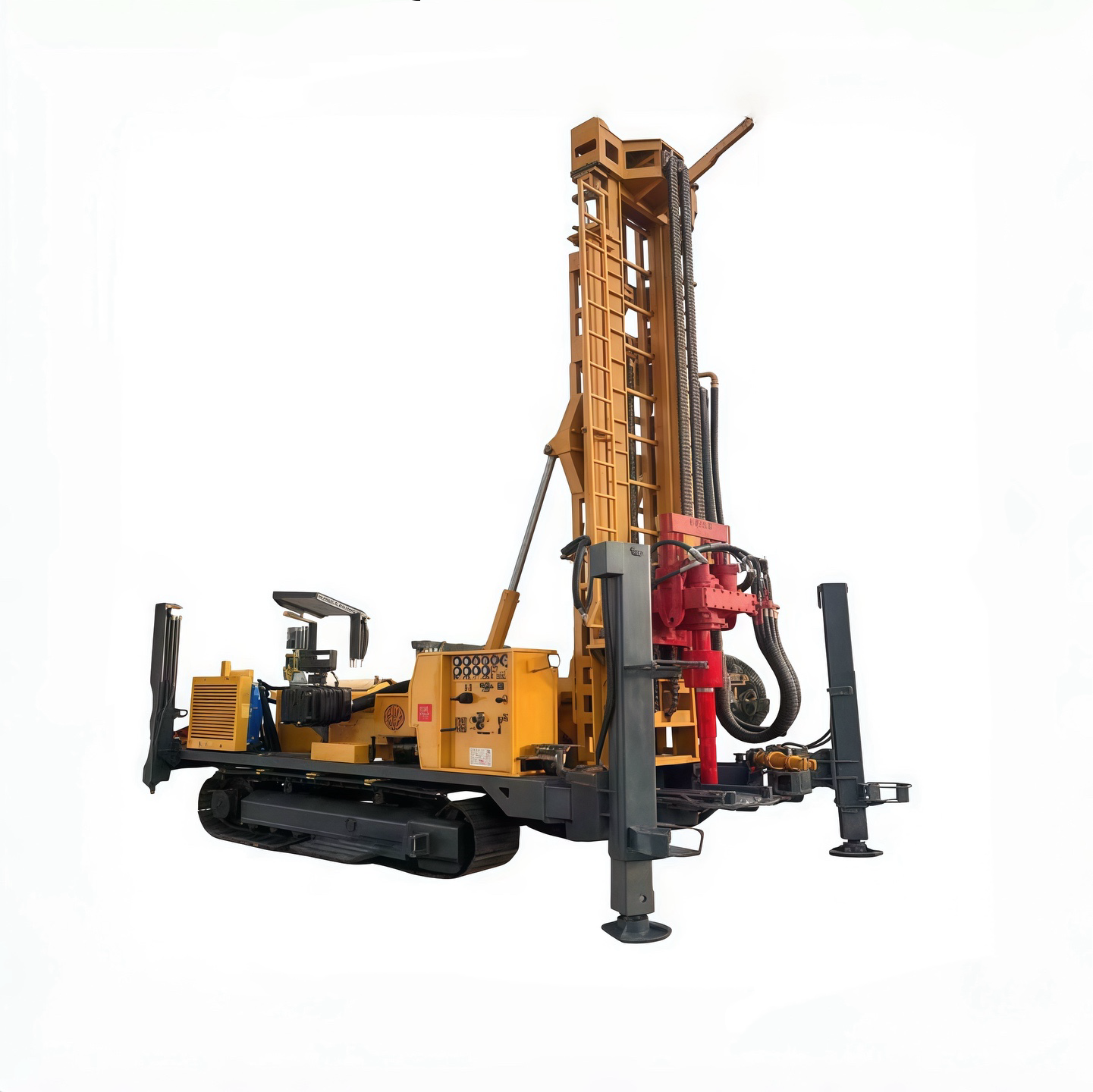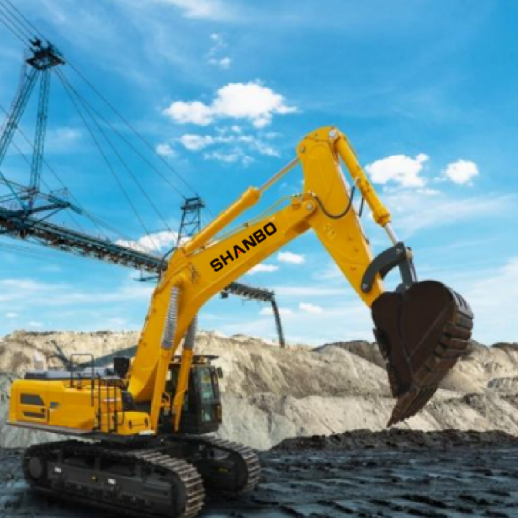How Much Does a Bulldozer Weigh and How Does It Affect Performance
Bulldozer Weight Ranges by Class
Compact Bulldozers (Under 20,000 lbs)
Compact bulldozers typically weigh under 20,000 lbs and work great for those little construction jobs around town plus all sorts of landscaping needs. They really shine when there's not much room to move around, which happens all the time on tight job sites. Because they're so light on their feet, these machines handle things like keeping yards looking nice, doing final touches on surfaces, leveling ground properly, and tackling muddy spots without sinking. The fact that they don't tip the scales too heavily means transporting them from one site to another isn't such a headache either. For folks running smaller contracting businesses, this makes financial sense since they can get the job done without breaking the bank on equipment costs.
The main benefit of these smaller bulldozers comes down to their weight. Because they don't weigh nearly as much as full size models, transporting them becomes much simpler using standard sized trailers instead of special equipment. This makes all the difference when working in tight areas like backyards or between buildings where big machines just cant fit. Most compact bulldozers come with attachment options too. Some folks attach specialized blades for cutting through thick vegetation while others prefer grading tools for leveling out small patches of land. When it comes to price tags, we're looking at anywhere from $30k to $80k depending on features and brand reputation. That's still considerably cheaper than what someone would pay for a full sized bulldozer though, which often runs into six figure territory.
Shanbo makes some of the most popular compact bulldozers available today. Their machines tend to last longer than many competitors thanks to heavy duty construction materials used throughout. When looking at prices for these smaller units, there's quite a spread based on what comes standard versus optional extras. Some basic models start around budget friendly levels while others with hydraulic attachments or enhanced blade systems jump into higher price brackets. Most contractors find that entry level options work just fine for day to day tasks without breaking the bank too badly.
Medium-Class Dozers (20,000-60,000 lbs)
Medium-class bulldozers play a vital role in general construction, road building, and utility work. Weighing between 20,000 and 60,000 pounds, these dozers strike an excellent balance between power and mobility. This weight class is often chosen for projects needing substantial earthmoving capabilities while maintaining a degree of agility.
Medium sized bulldozers bring several benefits to the table, mainly because they have better power relative to their weight. This makes them work well across different types of terrain and conditions. What sets these machines apart is how they strike just the right balance between being able to move around easily and still pack quite a punch when pushing materials. They're commonly used for things such as cutting through dense vegetation, getting ready construction sites, or working on various commercial projects where heavy lifting matters. The specific weight class works really well for machinery that must stay agile but also needs sufficient strength to tackle tough jobs without breaking down under pressure.
There are several well-regarded models in this category, such as the Shanbo 235 hp crawler bulldozer. Prices in this class can vary based on technology, additional features, and brand prestige. Industry benchmarks suggest these dozers are competitively priced within the market, offering substantial value for companies involved in larger-scale developments.
Heavy-Duty Bulldozers (60,000-150,000+ lbs)
For big projects such as mining sites, oil fields, and massive earth moving jobs, heavy duty bulldozers just cant be beat. We're talking about machines that tip the scales somewhere between 60 thousand and well over 150 thousand pounds. That kind of weight gives them the muscle and balance needed to tackle really tough work on site. Built tough with reinforced frames and thick undercarriages, these beasts are designed to haul massive amounts of dirt and rock while keeping going even when temperatures spike or rain turns everything to mud.
Heavy duty dozers weigh more because they need to last longer and stay stable while working through big landscape changes or tough materials like compacted dirt and rock. These machines can carry much heavier loads than standard equipment, which means operators get more done across large sites without constantly stopping to adjust. What makes them so reliable? Their extra weight keeps them grounded even on rough ground where lighter machines might tip over. Construction crews rely on this stability during earthmoving projects where safety margins are slim and mistakes cost time and money.
Among the top performers in this segment are the Shanbo 603 horsepower crawler bulldozer equipped with a bucket attachment and the Komatsu D375 model. These machines really shine when pushed hard in tough conditions like mining sites or heavy construction zones. The market seems pretty hot for these particular models right now. Their prices reflect not just what they can do but also how long they last through all that punishment. People who actually operate these beasts report time after time that they simply don't break down like cheaper alternatives. Industry pros consistently rate them as go-to equipment for serious earthmoving tasks where lesser machines would fail within weeks.
Shanbo has become quite popular among construction professionals looking for reliable bulldozers these days. The company brings something fresh to the table with its machines that pack serious power despite their size. They make several types across different weight categories. Smaller units handle tight spaces really well, which is great for urban projects where bigger machines just won't fit. For tougher jobs on rough terrain or big earthmoving tasks, the heavier models stand up to punishment day after day without breaking down. What sets Shanbo apart is how they integrate modern tech into their build quality. Contractors who need versatile equipment for everything from small site prep work to major infrastructure projects find these dozers hold their own against bigger names in the industry.

Key Factors Influencing Bulldozer Weight
Engine Power and Chassis Design
When it comes to bulldozers, there's a clear relationship between engine power and machine weight. Different kinds of engines get installed depending on what kind of job needs doing. Most bulldozers run on diesel because these engines last longer and produce plenty of torque needed for pushing through tough terrain. Now here's something interesting about this setup: bigger engines mean stronger parts throughout the machine. And stronger parts naturally make the whole thing heavier. But wait, isn't extra weight bad? Not really in this case. The added mass actually helps stabilize the dozer during operation, making it much better at handling those demanding construction sites or rugged land clearing projects.
The way a bulldozer handles on rough terrain depends heavily on its chassis design and how weight gets spread out across the machine. Good chassis engineering makes all the difference for balance, which means operators can navigate tighter spaces without digging into soft ground as much. Manufacturers have been experimenting with new materials lately that help distribute weight more evenly throughout the frame. This matters most with hydraulic models since they need precise control when pushing through tough conditions. Some companies report up to 15% improvement in handling after updating their chassis designs, though results vary depending on the specific model and operating environment.
Blade Types and Additional Attachments
The different kinds of blades used on bulldozers, including straight blades and those shaped like a U, actually change how much the whole machine weighs, which then affects what it can do. Straight blades tend to be lighter on the scale, making them pretty versatile for general work around the site, though they really struggle with anything too heavy duty. On the flip side, U-blades pack on more weight since they're built specifically for pushing big piles of dirt and debris across construction sites. These heavier blades definitely boost the bulldozer's capacity for moving material, but come at the cost of reduced maneuverability in tight spaces where precision matters most.
Adding attachments like rippers, winches, or extra counterweights really boosts what a bulldozer can do on site. They make the machine heavier for sure, but that extra weight actually gives operators more options when working in tough conditions. A ripper attachment helps break apart compacted earth while winches let crews pull stubborn objects out of the way. What gets attached depends entirely on what job needs doing at any given moment. Operators typically pick their gear based on the specific challenges they expect to face during operations.
Counterweights and Stability Features
Counterweights are essential for maintaining the stability of a bulldozer, particularly in larger models. These weights balance the machine, ensuring it remains grounded and stable while handling heavy materials or operating on sloped terrains. They are indispensable for ensuring that bulldozers maintain optimal functionality in various operational settings.
Counterweights are important, but there's another factor that makes all the difference when it comes to keeping things steady. Take wider tracks for instance. These bad boys spread out the machine's weight across a larger area, so they put less pressure on the ground below. That means operators can work on muddy fields or rocky terrain without sinking or getting stuck. The blades themselves matter too. Some models come with special shapes or angles that help balance the load during heavy lifting tasks. This matters a lot for those big crawler dozers working in tough conditions where instability could lead to serious problems down the line.
Traction and Ground Pressure Dynamics
Bulldozer weight plays a big role in how well they grip the ground, particularly across different kinds of dirt and terrain. These heavy machines rely on their bulk to create more friction between those steel tracks and whatever surface they're pushing against. That extra grip matters a lot for getting work done properly. When there's not enough traction, bulldozers just spin their wheels instead of moving forward effectively. Research into soil behavior shows something interesting too: bigger, heavier bulldozers tend to stay put better than lighter ones, even when things get really slick or the ground slopes sharply. Their sheer mass gives them an edge in maintaining control where smaller equipment would struggle badly.
The weight of a bulldozer directly affects something called ground pressure, which matters a lot when working on different types of terrain. To figure out ground pressure, we basically divide the total weight of the machine by how much surface area touches the ground through its tracks or wheels. When ground pressure stays low, the bulldozer won't sink into soft earth and won't tear up the soil too badly either. This becomes especially important when operating near sensitive areas like wetlands or farmland, where heavy machinery might leave lasting scars on the landscape. Contractors who understand these pressure dynamics tend to pick the right equipment for each job site, which makes their work go smoother overall and reduces unnecessary damage to the environment.
Fuel Efficiency vs. Power Output
When weighing bulldozer options, the relationship between fuel efficiency and power output becomes a focal point of consideration. Heavier bulldozers often exhibit higher fuel consumption due to their larger engines designed to deliver more power.
However, the trade-off is typically increased pushing capability and strength to handle more demanding tasks. Reports from manufacturers highlight that advanced bulldozers integrate engine technologies aimed at maximizing fuel efficiency without compromising on power output, balancing cost-effectiveness with performance.
Fuel efficiency considerations definitely change depending on what weight class we're talking about when it comes to bulldozers. Lighter machines tend to burn less fuel because they've got smaller engines, but these same machines won't cut it when facing tough jobs that need serious muscle. When picking out equipment, folks in the field look at their actual work conditions first. Terrain matters a lot here too whether it's rocky ground or soft dirt affects how much power is needed versus how much fuel gets wasted. Most experienced operators check those spec sheets manufacturers provide, looking specifically at that power to weight ratio number. Getting this right means the difference between wasting money on excess fuel costs and actually getting the job done without constantly stopping for refueling breaks.
Maneuverability on Different Terrains
Bulldozer weight is a determining factor in how maneuverable these machines are across diverse terrains. Generally, heavier bulldozers can plow through difficult terrains like rocky landscapes or thick mud with more ease due to their weight, which provides ample traction.
However, this can also impede their ability to navigate tight spaces or softer grounds, where a smaller, more agile dozer might perform better. Weight considerations thus play a pivotal role in selecting the right bulldozer for specific environments.
User testimonials and expert opinions often highlight the importance of weight profiles in terrain performance. Heavier bulldozers might excel in stability but could face challenges in agility, especially over uneven landscapes.
Conversely, lighter bulldozers, while potentially more efficient in navigation and speed, may struggle with tasks requiring significant force and steadiness. Operators are thus advised to thoroughly evaluate the typical terrain conditions they expect to work with to make informed decisions about the most suitable bulldozer weight class.
Crawler vs. Wheeled Bulldozers: Weight and Application Differences
Track Systems in Crawler Dozers
Crawler bulldozers, or dozers, are renowned for their track systems, which offer distinct advantages in weight distribution and traction. The tracks allow the heavy weight of the bulldozer to be distributed evenly across a large surface area, minimizing pressure on the ground.
This distribution is particularly beneficial in soft or uneven terrain, such as mud or loose sand, as it prevents the dozer from sinking or getting stuck. Typically, crawler bulldozers fall into a range of weights that enhance their stability in challenging conditions.
Wheeled Models for Speed and Versatility
Wheeled bulldozers are designed for speed and versatility, making them the ideal choice for operations on flat terrains where quick movement is essential. Unlike their crawler counterparts, wheeled bulldozers boast significantly higher transportability, allowing them to swiftly transition between sites.
Additionally, their weight ranges are generally lighter, enabling faster speeds without compromising on performance on solid ground. Despite being less effective in rough terrains, the wheeled models more than make up for this with their adeptness in areas demanding rapid mobility.
Weight Distribution Comparisons
The way weight sits on a bulldozer really matters when choosing between crawler and wheel models for different jobs. Take crawler bulldozers for instance they spread their weight out over those big tracks, making them rock solid on muddy or sandy terrain. That's why construction crews love them for swampy areas or places where the ground gives way easily. On the flip side, wheeled dozers put most of their mass right over the wheels. These machines work best on hard packed surfaces where there's no risk of sinking. The wheels grip better on concrete pads or compacted earth, so they're commonly seen at demolition sites or road construction projects where the surface stays firm under pressure.
This distinction in weight distribution fundamentally affects each model's stability and performance, as supported by expert articles and engineering studies that emphasize the importance of matching bulldozer types to specific tasks and environments.
Hydraulic Systems and Their Impact on Bulldozer Efficiency
Hydraulic Blade Control Mechanisms
Hydraulic systems play a crucial role in modern bulldozers, enhancing both efficiency and control. These systems enable precise manipulation of the bulldozer's blade, which directly impacts work quality and operational speed. Hydraulic blade control mechanisms are sophisticated, allowing operators to manage weight distribution and power with remarkable precision.
Control becomes really important when dealing with complicated jobs like grading surfaces or making cuts, since small changes matter a lot here. Take hydraulic bulldozers for instance. When operators need to adjust blade angles even slightly off position just a couple degrees, it makes all the difference in how well things work. Proper positioning helps move materials around much better while requiring less physical strain on the machine itself. Getting those angles right means less wasted time and energy overall during operations.
Power-to-Weight Ratio in Modern Dozers
When looking at modern bulldozers, the power to weight ratio really matters for their overall performance. Basically, this number tells us how well the machine turns engine power into actual movement across different terrains. Machines with better ratios just plain perform better on job sites. They get going quicker, handle heavier loads without bogging down, and generally make life easier for operators dealing with tough conditions. On big construction projects where time equals money, having equipment that balances muscle with mobility makes all the difference between meeting deadlines and falling behind schedule.
The hydraulic system improvements we've seen lately have really made a difference in these machines' performance metrics. Take electronically controlled hydraulics for example they make dozers respond faster and distribute power much better throughout the machine. This means operators burn less fuel while getting jobs done quicker than before. Today's dozers that strike a good balance between power and weight aren't just cheaper to run day to day, they actually get more work accomplished at construction sites without wearing out as fast. Contractors who upgrade to these newer models typically report noticeable savings on their bottom line after just a few months of operation.
Case Study: Hydraulic vs. Mechanical Systems
Looking at how hydraulic systems stack up against mechanical ones in bulldozers shows some pretty clear benefits when it comes to getting work done efficiently. Some research into this area suggests that hydraulic setups tend to handle weight distribution better and generally operate faster than old school mechanical systems. The difference becomes really noticeable on job sites where operators need to make constant fine tuning adjustments throughout the day. With hydraulics, there's much less jarring movement between different operations, which means components don't get worn out as quickly compared to what happens with traditional mechanical linkages.
Moreover, hydraulic systems offer more flexibility in control, leading to better maneuverability and less strain on the operator. This makes hydraulic bulldozers especially advantageous in demanding environments where precision and speed are crucial, further reinforcing their preference over traditional mechanical models in modern construction and earthmoving operations.
Choosing the Right Bulldozer Weight for Your Project
Assessing Terrain and Material Density
When picking out the correct weight for a bulldozer, terrain matters most along with how dense the materials will be. Take time to look at what kind of soil we're dealing with and how packed together it is before making any decisions about equipment selection. Big heavy machines work best on tough ground conditions like rocks or really tight packed earth because they don't slip around as much and stay steady during operation. This makes all the difference when working through rough spots where lighter models might struggle to get anywhere without getting stuck.
Conversely, lighter bulldozers are more suitable for softer soils, where they can maneuver efficiently without damaging the ground. Field studies often highlight these guidelines, recommending that contractors assess soil profiles and environmental conditions before deciding on bulldozer weight, as the right choice maximizes operational efficiency across varied landscapes.
Small vs. Large Projects: Cost-Benefit Analysis
Performing a cost-benefit analysis is crucial when choosing bulldozer weight for projects of different scales. For small projects, the benefits of opting for lighter bulldozers include lower fuel consumption and enhanced maneuverability, which leads to significant cost savings.
Big construction jobs often need those heavy duty bulldozers just to get all the dirt and debris moved in a reasonable timeframe, even though they burn through fuel at a much faster rate. The numbers back this up too when we look at real world operations. When contractors match the right sized machine to what needs doing, things run smoother overall. Less time wasted waiting for equipment to catch up means workers stay productive longer throughout the day. Getting clear on exactly what the job entails financially makes all the difference in making smart choices. Contractors who take time to really understand their budget constraints tend to save money in the long run while getting projects completed ahead of schedule most of the time.
Maintenance and Operational Costs Linked to Bulldozer Weight
Fuel Consumption Patterns Across Weight Classes
The way bulldozers burn fuel changes quite a bit depending on their weight class, and this has real impact on what companies spend over time. Big heavy models typically guzzle more fuel compared to smaller ones because they need so much power just to get moving and stay moving. Industry experts have pointed out that how efficient these machines are at using fuel depends not only on their size but also what kind of jobs they're doing day to day. A 20-ton dozer pushing through tough terrain will obviously burn more than a lighter model working on smoother ground.
Statistically, the fuel expenses for operating a large bulldozer can be significantly higher over time compared to a smaller model. Therefore, when selecting a bulldozer, it's crucial to consider the balance between required operational power and ongoing fuel costs.
Wear on Undercarriage Components
Bulldozer weight plays a major role in how fast those undercarriage parts get worn down, which naturally drives up maintenance expenses over time. When these machines are heavier, they put extra strain on the tracks and all those metal bits underneath, causing them to degrade much quicker than lighter models. We've seen this happen repeatedly on job sites where operators complain about having to replace rollers, idlers, and track segments way too often because their machine is just too heavy for what it's doing day after day.
This is why choosing an appropriately weighted dozer can significantly influence the long-term maintenance budget. It is crucial to factor in these potential costs when determining the right bulldozer weight category for your projects.
Transportation Logistics and Permit Requirements
Bulldozer weight plays a pivotal role in shaping transportation logistics, especially concerning permit requirements for over-weight vehicles. Transporting heavier bulldozers often necessitates special permits and adherence to specific regulations, which can complicate and delay logistics.
Getting to know both local and national transportation regulations can make all the difference when moving things around legally and efficiently. Take those big heavy vehicles for example they often need police escorts or special flatbed trucks just to stay within legal limits on roads. Most people don't realize how strict these requirements actually are until they start planning their transport logistics. That's why smart movers always check out these rules well ahead of time rather than scrambling at the last minute. While most moves go smoothly with proper preparation, there are definitely exceptions depending on what exactly needs transporting from one place to another.
Conclusion
In conclusion, the weight of a bulldozer plays a significant role in various operational aspects, from fuel consumption to maintenance and transportation logistics. Lighter models might offer economic fuel use and reduced wear on components, while heavier bulldozers, though potentially more powerful, may incur higher operational costs.
Understanding these dynamics helps in selecting the right bulldozer for specific applications, balancing immediate needs with long-term efficiency. Opting for the appropriate weight class can be a strategic decision impacting the overall success of your projects.
Recommended Products
 Hot News
Hot News
-
“Water Savior” 200 m Reverse Circulation Water Well Drills Arrive in Uzbekistan
2025-03-28
-
What Is a Bulldozer? Everything You Need to Know
2025-02-18
-
Skid Steer vs Bulldozer: Cost, Efficiency, and Versatility Compared
2025-11-13
-
Inside the Bulldozer Factory: How Modern Dozers Are Built from the Ground Up
2025-11-12
-
How to Operate a Spider Excavator Safely and Efficiently
2025-11-11
-
What Is an Excavator? A Beginner’s Guide to This Essential Construction Machine
2025-11-10












